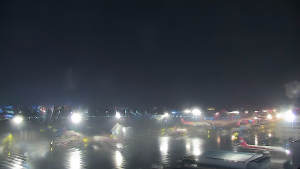AVGS-R is an application-oriented dataset for airport ground movable target surveillance. Currently, the AVGS-R dataset has a total of 5050 image data containing 15968 aircraft instances, 18388 vehicle instances, and 3745 person instances, which encompasses a variety of variations or challenges in airport ground movable target detection, such as multi-scale, multi-level occlusions, lighting changes, etc. We use manual annotation to label the images.
Dataset
AGVS-R contains 5050 image data and below are the various variations and challenges of movable target detection in airport ground.
Appearance: In some cases movable targets may be confused with the environment and marketing to extract movable target appearance features. Smooth metallic materials on aircraft may produce special reflections in bright light, further interfering with feature recognition.
Perspective changes: Aircraft as one of the main targets of the campaign, vary considerably in appearance and character from one perspective to another.
Multi-scale: The movable targets themselves are of different scales, with different distances from the camera, and present different sizes in the picture, too large or too small will both affect the detection performance.
Light changes: The AGVS-R dataset is collected entirely outdoors and is therefore inevitably affected by changes in light. Various variations in light can affect detection to varying degrees, with low light at dawn and at night increasing the difficulty of detecting movable targets.
Multi-level occlusion: Usually, specific shape and structural features of an object are crucial for detection algorithms. When occlusion occurs, these critical features become invisible, and the mutual occlusion between multiple objects may make the originally independent objects in the image appear as a composite object, increasing the complexity of separating individual objects.
Weather changes: Weather variations can pose challenges to object detection. High visibility on sunny days makes detection relatively easy. On cloudy and cloudy days, the shadows of objects can affect detection. Poor visibility on rainy and foggy days results in blurred images and unclear outlines of movable targets that can be easily confused with the background.
Complex background.: Airport scenes usually contain numerous elements such as buildings, runways, taxiways and terminals, which constitute a complex visual background that makes the object detection algorithms disturbed in finding and distinguishing movable targets.
Ground Truth
The AGVS-R dataset provides precise bounding boxes for movable targets on the airport ground, and five students were involved in the labeling effort.
Examples
Here are some examples of challenges.




